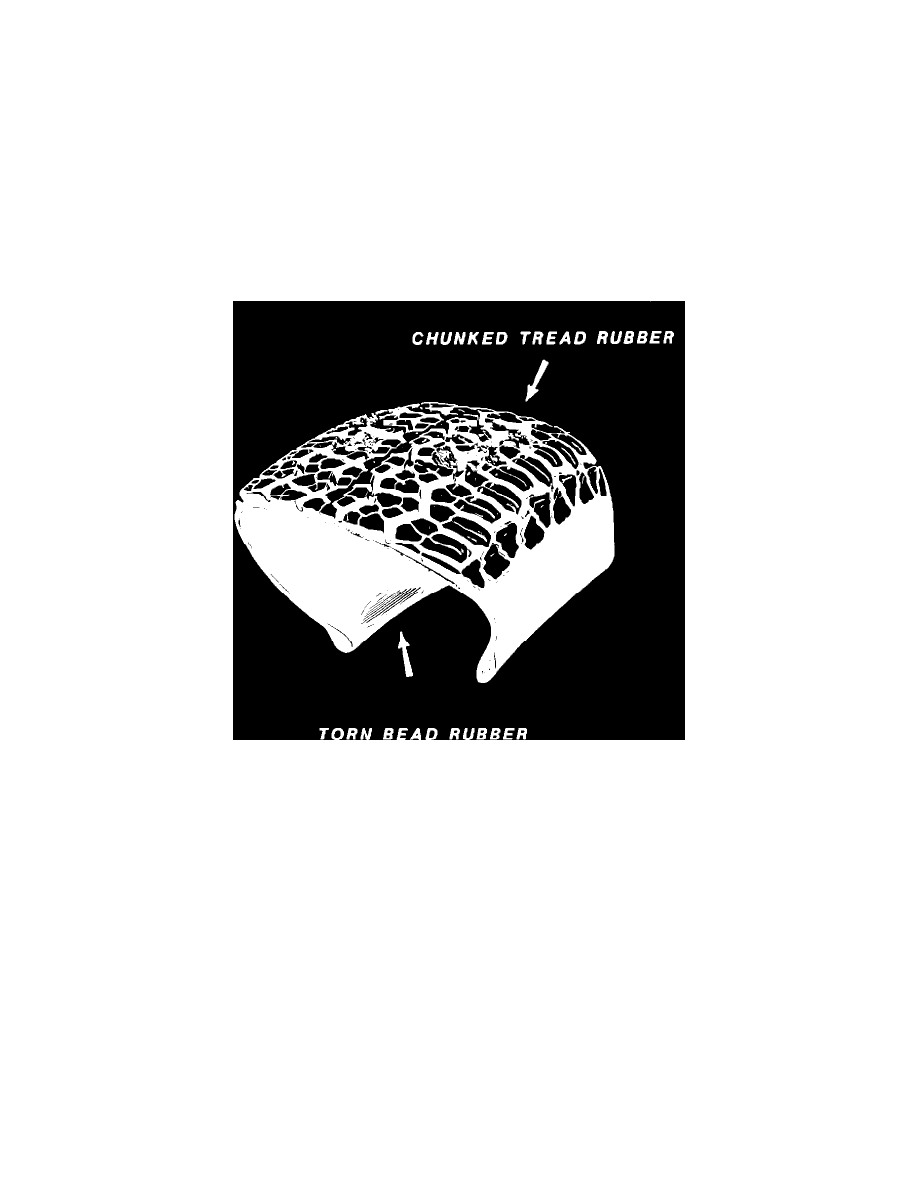C 1500 Truck 2WD V8-350 5.7L (1989)

Tires: All Technical Service Bulletins
Tire - Tread Chunking/Torn bead
Number:
91-171-3E
Section:
3E
Date:
January 1991
Corp. Bulletin No.: 993501R
Subject:
TIRE DAMAGE CAUSED IN GM ASSEMBLY PLANTS - TREAD CHUNKING TORN BEAD
Model and Year:
1988-91 PASSENGER CARS AND TRUCKS
THIS BULLETIN CANCELS AND SUPERSEDES DEALER SERVICE BULLETIN NO. 90-52-3E, DATED OCTOBER 1989. THE 1991 MODEL
YEAR HAS BEEN ADDED. ALL COPIES OF 90-52-3E SHOULD BE DISCARDED.
Isolated incidents of the following types of tire damage have recently been reported from the field. Any such damage would be present at time of delivery
to the dealer. The probable cause of some of this damage has been traced to the assembly plant. Since such tire conditions are usually not the fault of the
tire manufacturer, any tires requiring replacement for these reasons should be considered GM's responsibility. Assembly plant damage should not be
confused with transportation damage, which continues to be the responsibility of the transportation company. The purpose of this bulletin is to help
identify assembly plant tire damage.
Tread Chunking
This condition is identified by small pieces of tread rubber torn or "chunked" out of the tire. This usually occurs in one area of the tread, although more
than one area is possible. The missing tread rubber should be apparent upon visual inspection. It can also usually be detected as a once-per-rev tire noise
upon road testing. This condition can happen in the assembly plant during the end of line line roll test. Hard braking such that the tire locks up on the roll
could be the cause, although other variables during the roll test can also be factors. Other types of tire tread damage noted at delivery should be
considered transportation damage.
Torn Bead Rubber
This condition is usually not visible unless the tire is dismounted from the wheel and, therefore, may not be detected during new vehicle inspection.
Depending on the extent of the tear, the condition may later be detected as a slow air loss, or a slight sidewall bulge. If the tire is dismounted from the
wheel and bead rubber is torn, it is possible that this damage occurred in the assembly plant during tire mounting. If it happened in the plant, the tear will
usually be on the inboard (blackwall) side of the tire. There should also be evidence of two tears, about 90 degrees apart, although one is usually much
